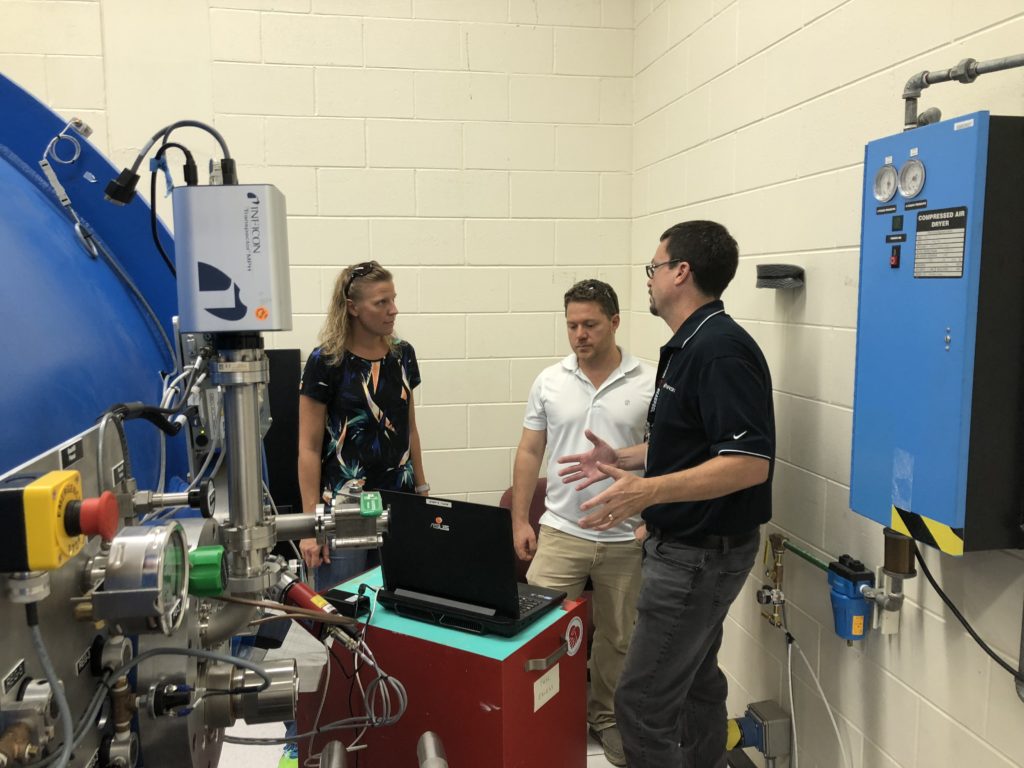
NASA Kennedy Space Center’s use of a technology widely employed in sophisticated manufacturing supports the agency’s space exploration efforts and also has led to improvements in the product’s design.
The technology is a sensor called a residual gas analyzer/mass spectrometer, or RGA. At each step in the process of producing complex items like semi-conductors, which can involve thousands of RGAs for process control, the devices can rapidly detect vacuum leaks as well as contamination that, if left unchecked, could result in manufacturing defects. RGAs also can determine the type and location of a leak by identifying its chemical composition.
A team at Kennedy leveraged their experience working with RGAs while they worked with members of industry to troubleshoot Kennedy’s thermal vacuum chamber, or TVAC. The chamber can simulate various space environments to test and prepare hardware for flight.
The NASA researchers, members of the Water Analysis and Volatile Extraction (WAVE) team, are developing RGAs as payloads for landers to detect resources on the Moon, such as water that astronauts can drink or convert to rocket fuel. During testing of the TVAC, engineers had detected pressure spikes indicative of small, invisible leaks. The WAVE team and members of industry demonstrated how to use a RGA sensor to troubleshoot the leaks by identifying gases present in the chamber which would indicate the source of a leak, thus avoiding a costly and time-consuming delay to operations.
This was not their first collaboration.
The NASA researchers had already put their RGA through numerous flight verifications, and had worked with the vender to resolve issues that arose when adapting the technology for space. Vibration testing, in particular, highlighted several ways in which RGA manufacturers could make their devices more robust. Ken Wright, chief scientist and instrument development lead for sensor manufacturer Inficon, said working with NASA produced at least three direct improvements to the company’s residual gas analyzer. “Our main product is now better because of this collaboration,” Wright said.
Janine Captain, a researcher at Kennedy, said the work was beneficial to everyone involved. “This collaboration makes the center stronger and better equipped to provide testing facilities to our customers,” she said. “Working with commercial providers enables us to continue expanding our capabilities.”
Employing the RGA sensor to troubleshoot Kennedy’s thermal vacuum chamber while preparing the same equipment for use in space is another example of harnessing innovation to develop the agencies capabilities and using technology to drive exploration.
